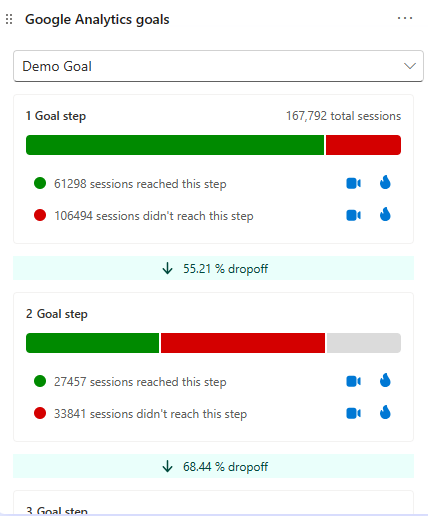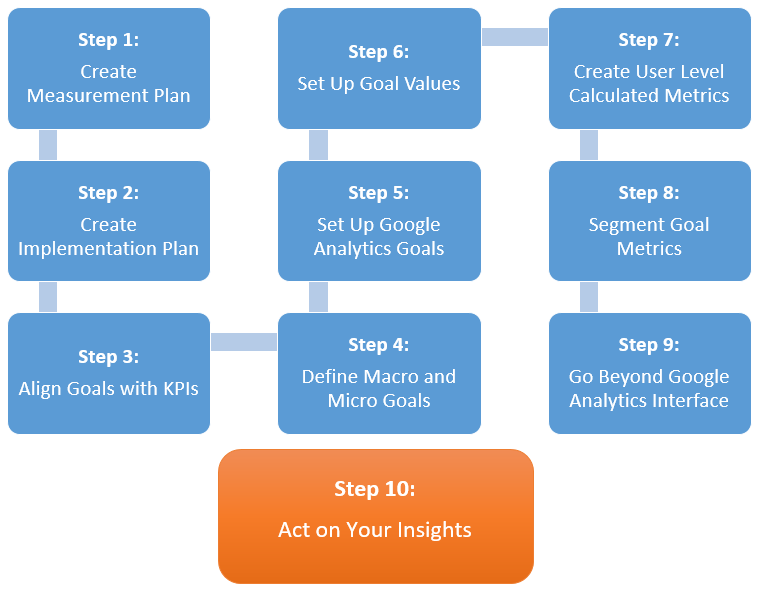What Data Is Google Analytics Goals Unable to Track and Why
What Data Is Google Analytics Goals Unable to Track and Why
Blog Article
Discover the Limitations of Google Analytics Goals: Introducing the Information Kind That Remain Untrackable
As companies increasingly count on data-driven decision-making, recognizing the restrictions of tools like Google Analytics becomes paramount. While Google Analytics Goals deal valuable understandings right into individual communications, there exist data kinds that elude monitoring, posing obstacles to an extensive understanding of customer behavior. These untrackable information kinds raise concerns concerning the accuracy and completeness of the analytics information that organizations heavily trust for their digital techniques. Interested to discover the surprise unseen areas in your data evaluation process?
Incomplete Individual Journey Tracking
Insufficient customer trip monitoring within Google Analytics can impede the capacity to properly assess customer behavior. When the user journey is not completely tracked, there are voids in the data that avoid a thorough understanding of just how customers connect with a website. This lack of insight can lead to missed possibilities for optimization and renovations to the customer experience.
One usual problem with insufficient user journey monitoring is the lack of ability to see the complete course that individuals take previously finishing an objective or leaving the website. Without this information, it is testing to recognize where individuals might be encountering obstacles or rubbing factors that avoid them from converting. Additionally, incomplete monitoring can obscure the influence of certain advertising and marketing efforts or site changes on customer habits.
To address this limitation, it is essential to establish up proper tracking mechanisms within Google Analytics to capture the whole individual journey. This may involve establishing occasion monitoring, objective funnels, or using devices like Google Tag Supervisor to ensure that no crucial interactions go unrecorded. By acquiring an extensive sight of the customer journey, site proprietors can make even more informed decisions to enhance user involvement and drive conversions.
Attribution Challenges
Navigating via attribution challenges in Google Analytics calls for a detailed understanding of exactly how different touchpoints contribute to the total conversion process. Acknowledgment challenges develop from the complexity of contemporary consumer journeys, where individuals communicate with several networks before converting. Google Analytics provides different acknowledgment models like initial touch, last touch, and linear, each supplying a different perspective on just how credit rating is assigned to touchpoints along the conversion path. These designs might not constantly accurately reflect the real influence of each touchpoint on the conversion.
One typical acknowledgment obstacle is the trouble in attributing conversions to the appropriate resource, especially in cases where users communicate with numerous networks before transforming. Furthermore, cross-device monitoring poses one more attribution challenge, as individuals usually change in between gadgets throughout their journey, making it challenging to track their communications effortlessly.
Offline Conversions
Provided the obstacles connected with attributing conversions accurately in online channels, the dimension of offline conversions offers a significant chance for marketers seeking a much more thorough understanding of their customers' trip. Offline conversions describe actions that customers absorb the physical globe, such as making purchases in brick-and-mortar stores or over the phone, attending events, or engaging with published products - what data is google analytics goals unable to track. These conversions are critical for services that run both online and offline, as they offer valuable understandings into the performance of advertising projects throughout various touchpoints
Tracking offline conversions typically postured a significant difficulty for marketers, as it was challenging to link these actions back to details on-line interactions accurately. With developments in innovation, such as the assimilation of CRM systems, one-of-a-kind identifiers, and promo code codes, organizations can currently bridge the void in between online and offline information to get a much more all natural sight of client behavior. By efficiently measuring offline conversions, marketing professionals can maximize their approaches, allocate sources extra successfully, and inevitably improve the general customer experience.
Cross-Device Tracking
Cross-device monitoring plays a critical duty in understanding the interconnected nature of customers' electronic communications across Get the facts several gadgets. In today's omnichannel world, where individuals perfectly change in between tablet computers, desktops, and smart devices, tracking their habits throughout these tools is vital for marketing professionals to acquire a thorough view of their client trip.

Additionally, personal privacy problems and regulations such as GDPR and CCPA have additionally complicated cross-device tracking. With individuals requiring even more control over their data and enhanced constraints on monitoring technologies, marketing experts have to discover privacy-compliant and innovative methods to connect individual interactions across gadgets.
Dynamic Material Involvement
Understanding individual interaction with dynamic content is pivotal in maximizing electronic marketing strategies for enhanced target market communication. Dynamic material refers to website components that transform based upon individual behavior, choices, or various other aspects, providing an individualized experience. Nevertheless, tracking individual communications with dynamic content positions obstacles for conventional analytics tools like Google Analytics.
While Google Analytics can track basic communications like clicks and page sights, it may struggle to record even more nuanced engagements within dynamic material. about his what data is google analytics goals unable to track. Metrics such as time spent on details vibrant elements, float actions, or interactions within pop-ups are often not conveniently measurable making use of typical tracking approaches. This Visit Your URL restriction hinders marketers' capacity to fully comprehend exactly how customers are engaging with vibrant content and customize their techniques as necessary

Conclusion
Finally, Google Analytics goals have constraints in tracking incomplete individual trips, associating conversions precisely, capturing offline conversions, tracking cross-device interactions, and gauging dynamic web content engagement. These restrictions highlight the value of exploring additional monitoring approaches and devices to gain a more extensive understanding of individual habits and conversions past what Google Analytics can offer.
While Google Analytics Goals offer beneficial understandings right into individual communications, there exist information kinds that avoid tracking, positioning challenges to a detailed understanding of individual habits.Incomplete customer trip tracking within Google Analytics can hinder the ability to properly assess customer habits. When the individual journey is not totally tracked, there are voids in the information that stop an extensive understanding of how users interact with a site.One common concern with incomplete customer trip monitoring is the lack of ability to see the full course that individuals take previously finishing a goal or leaving the website. By acquiring a comprehensive view of the customer trip, website proprietors can make more informed choices to improve user involvement and drive conversions.
Report this page